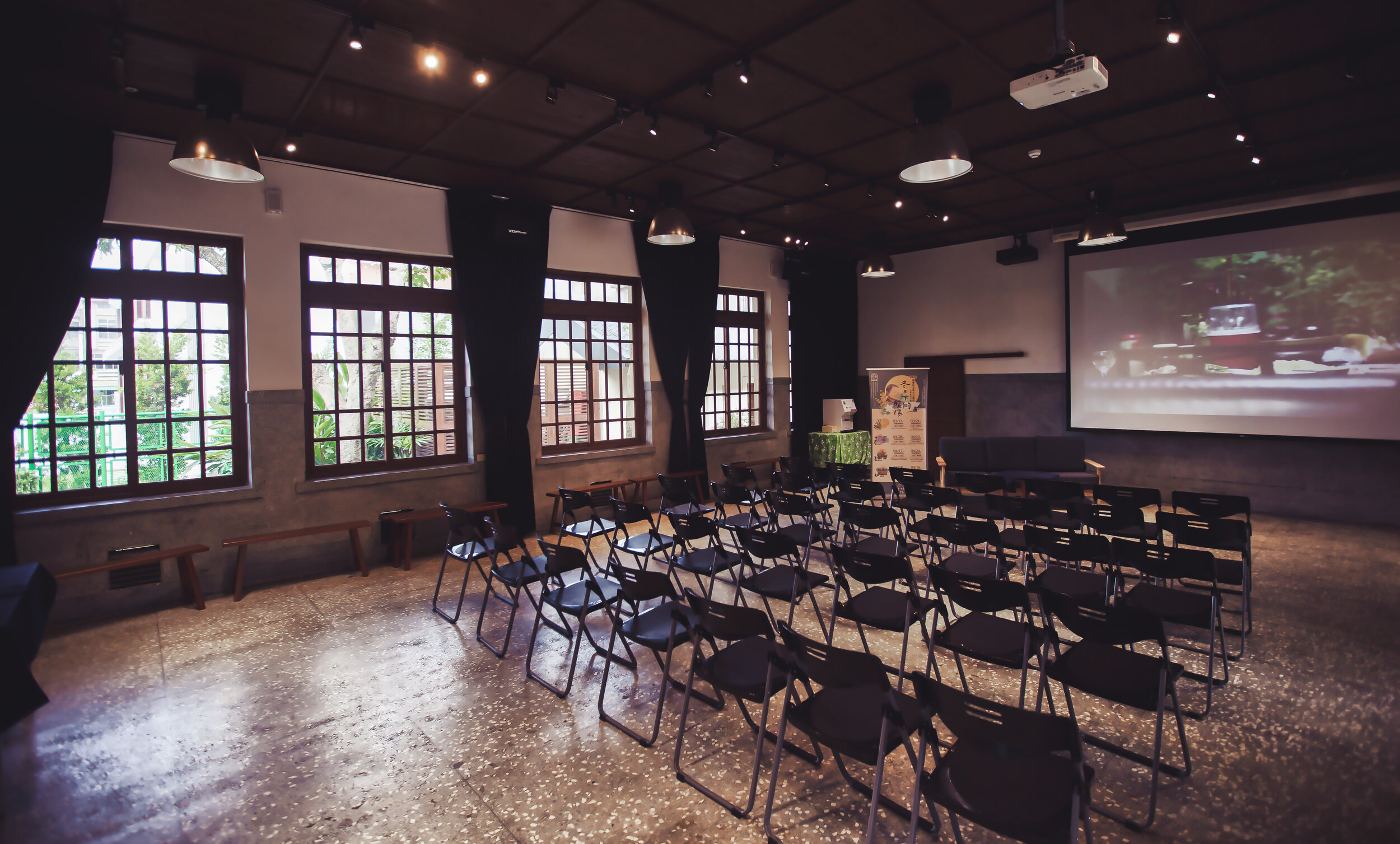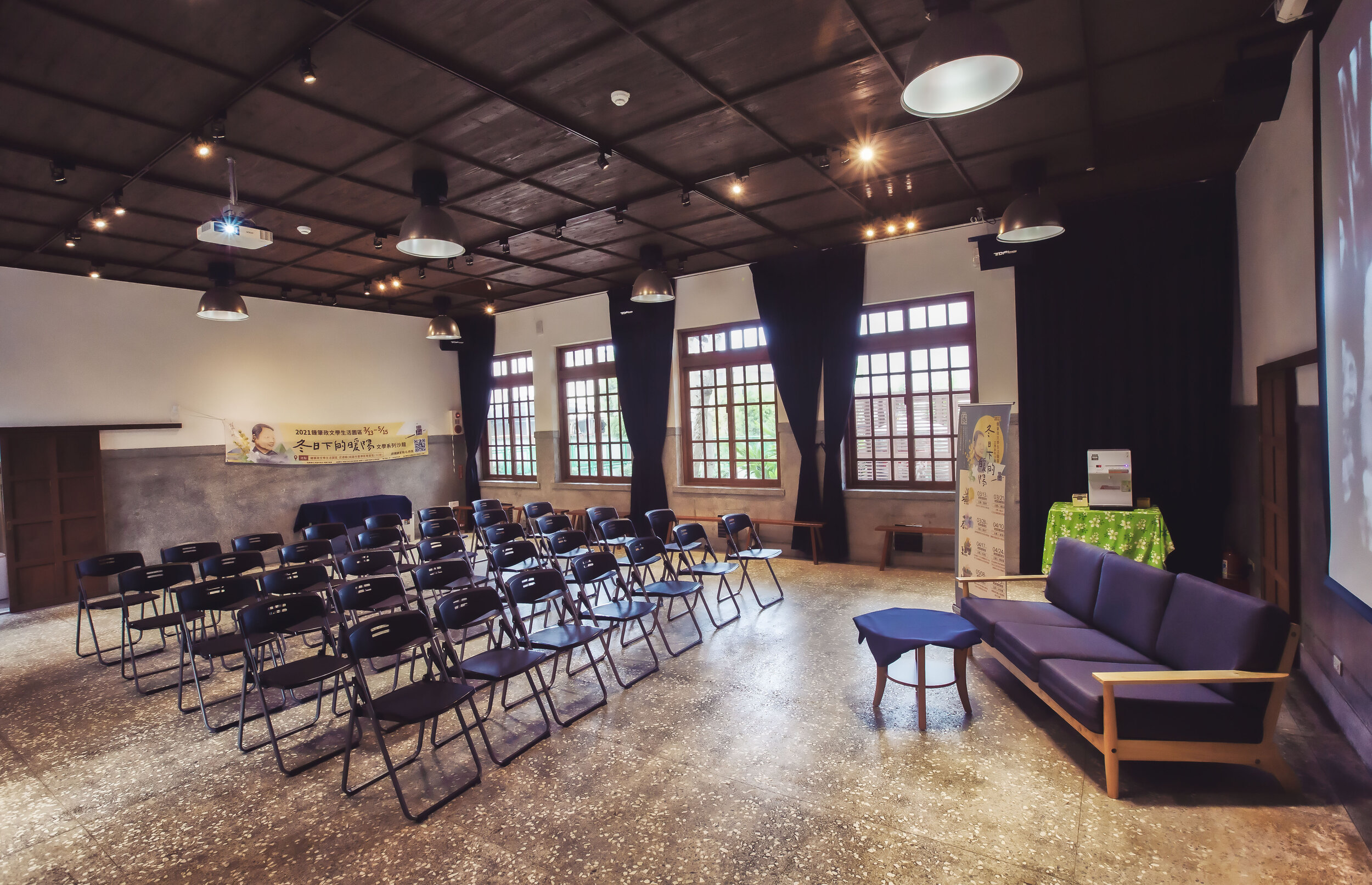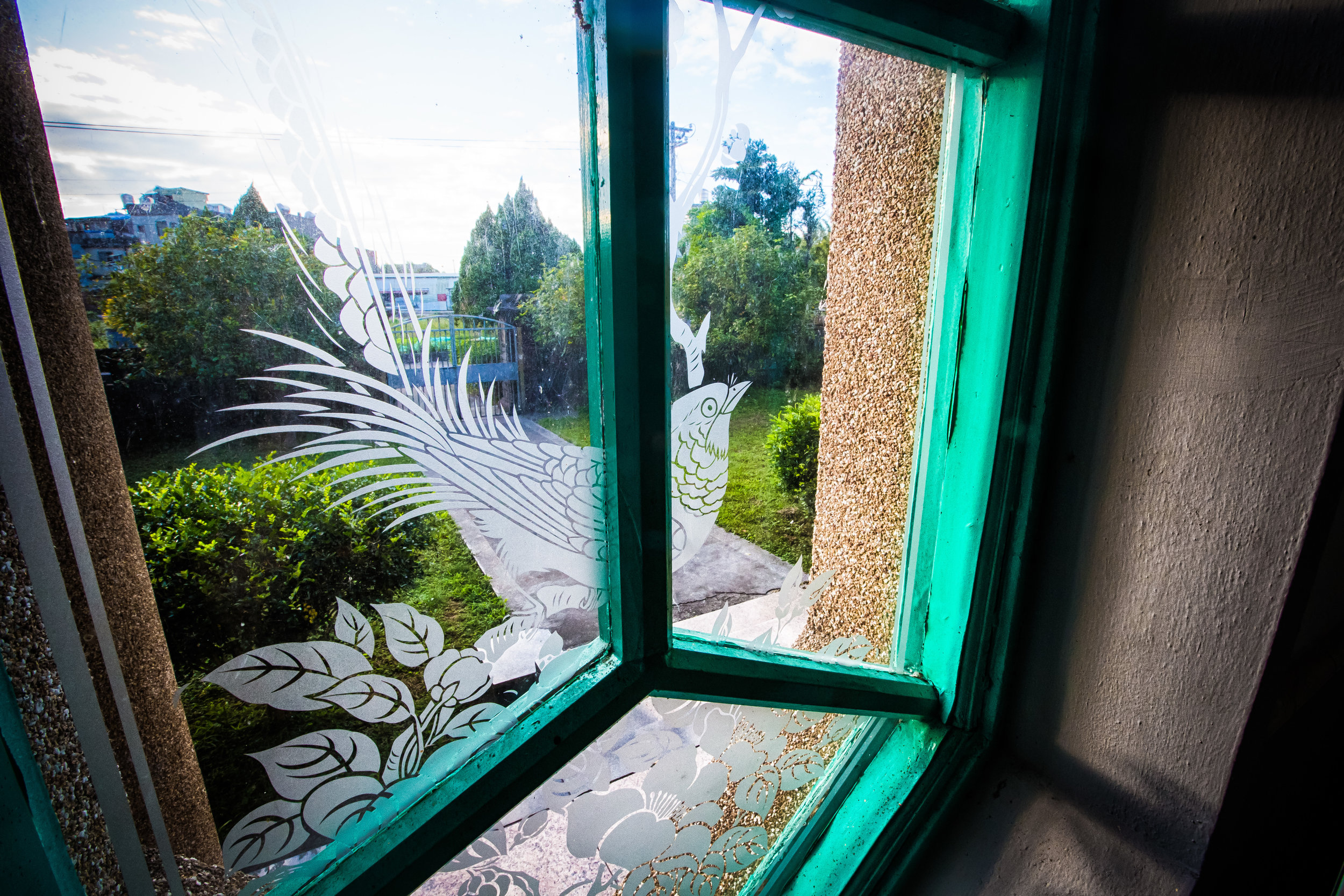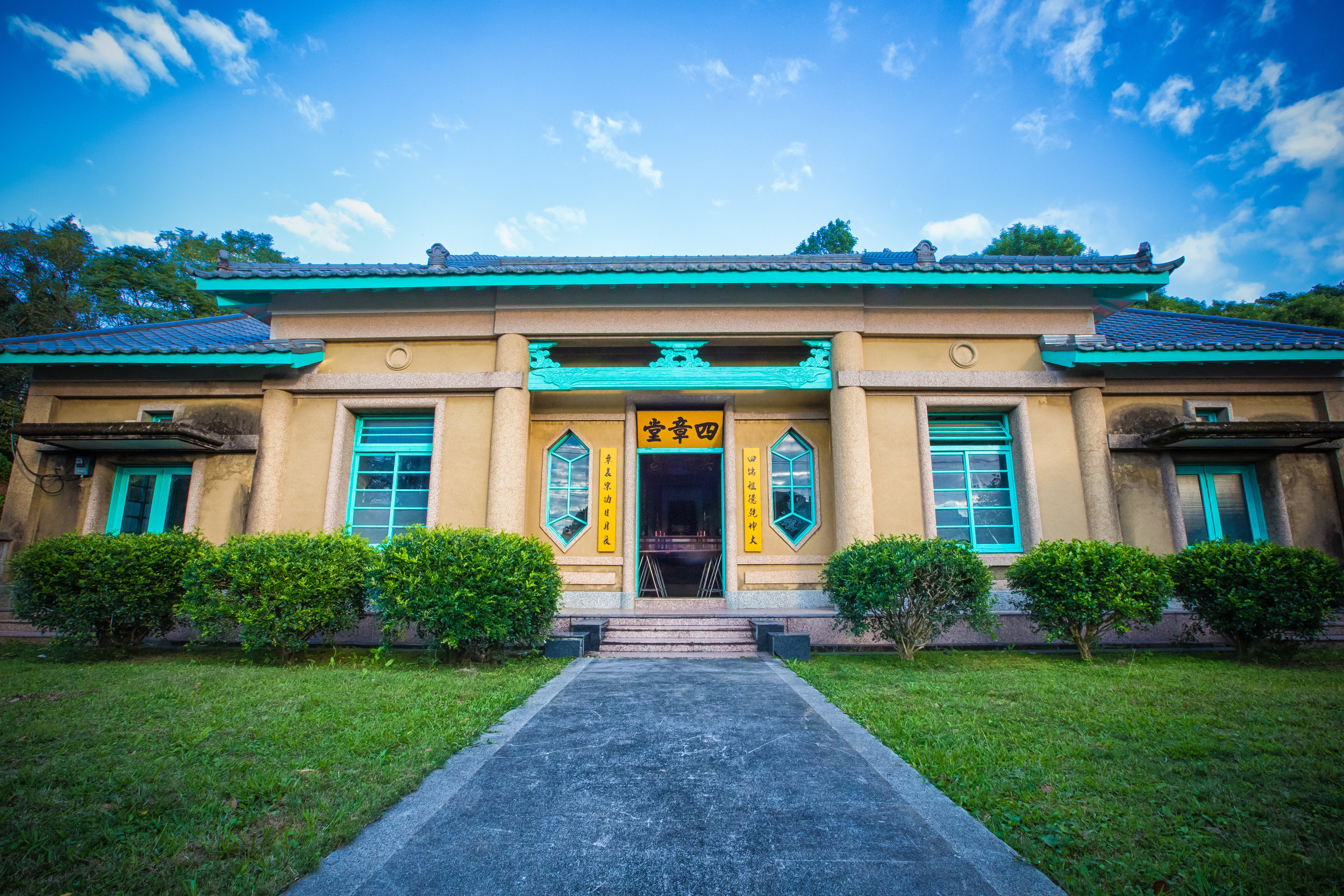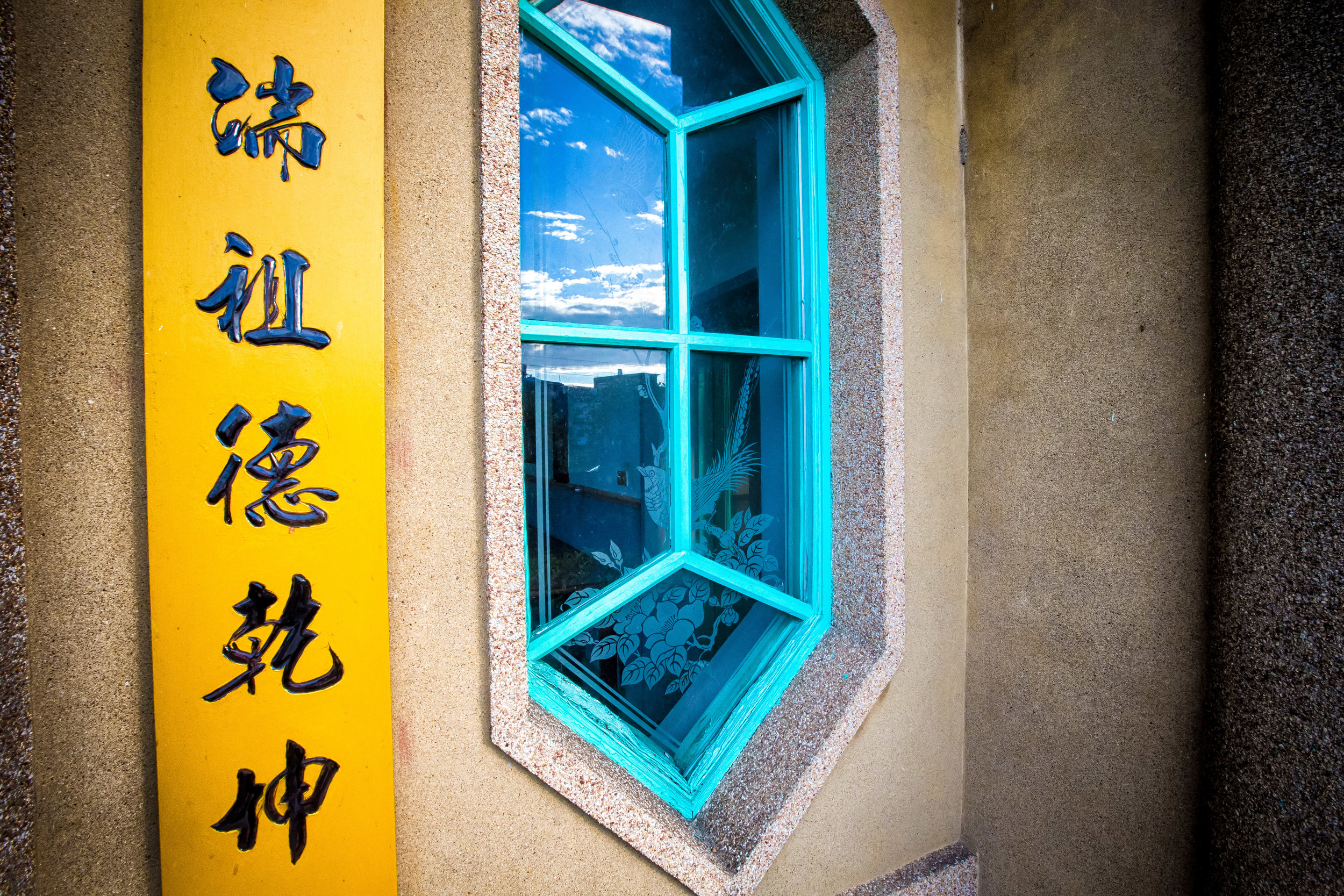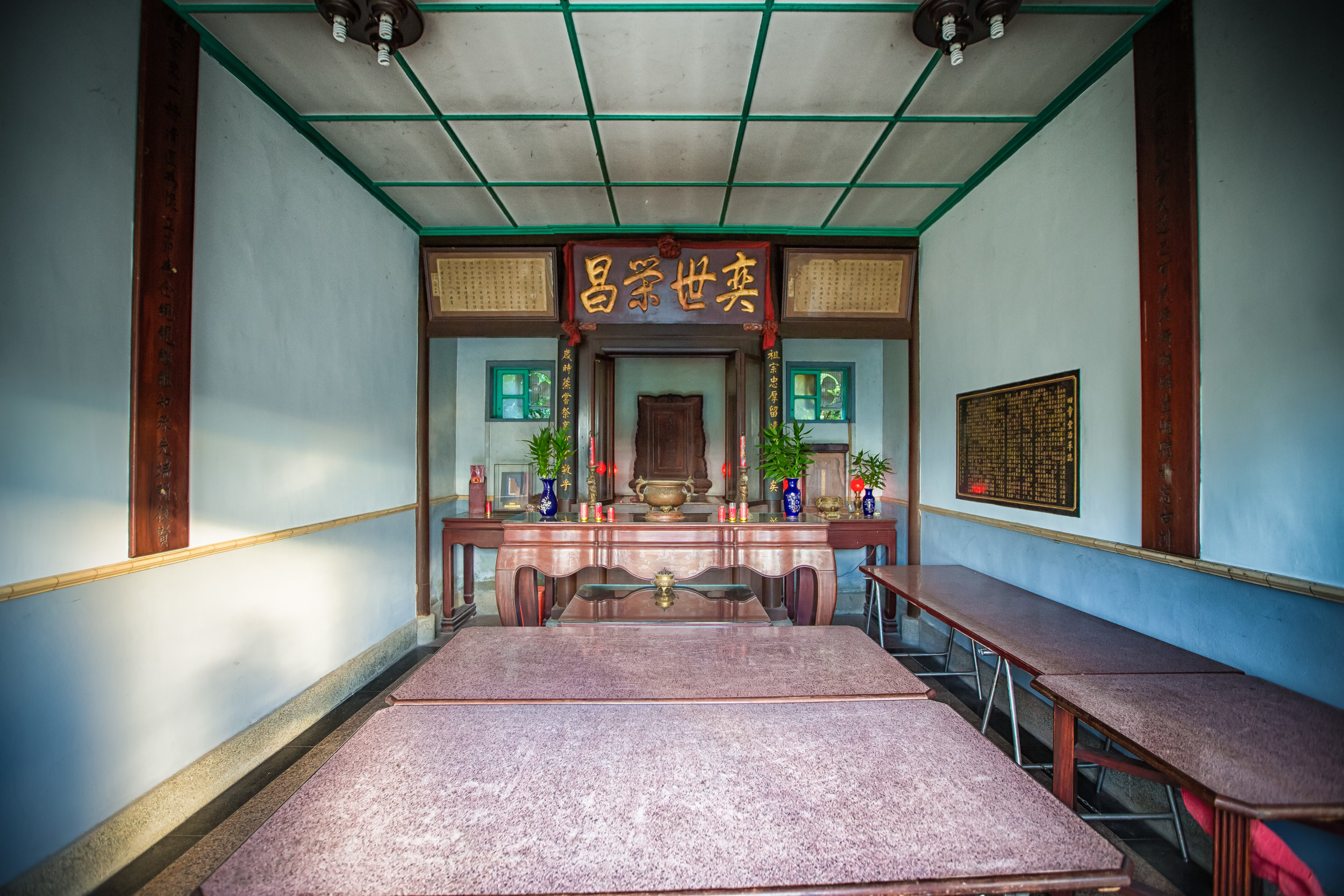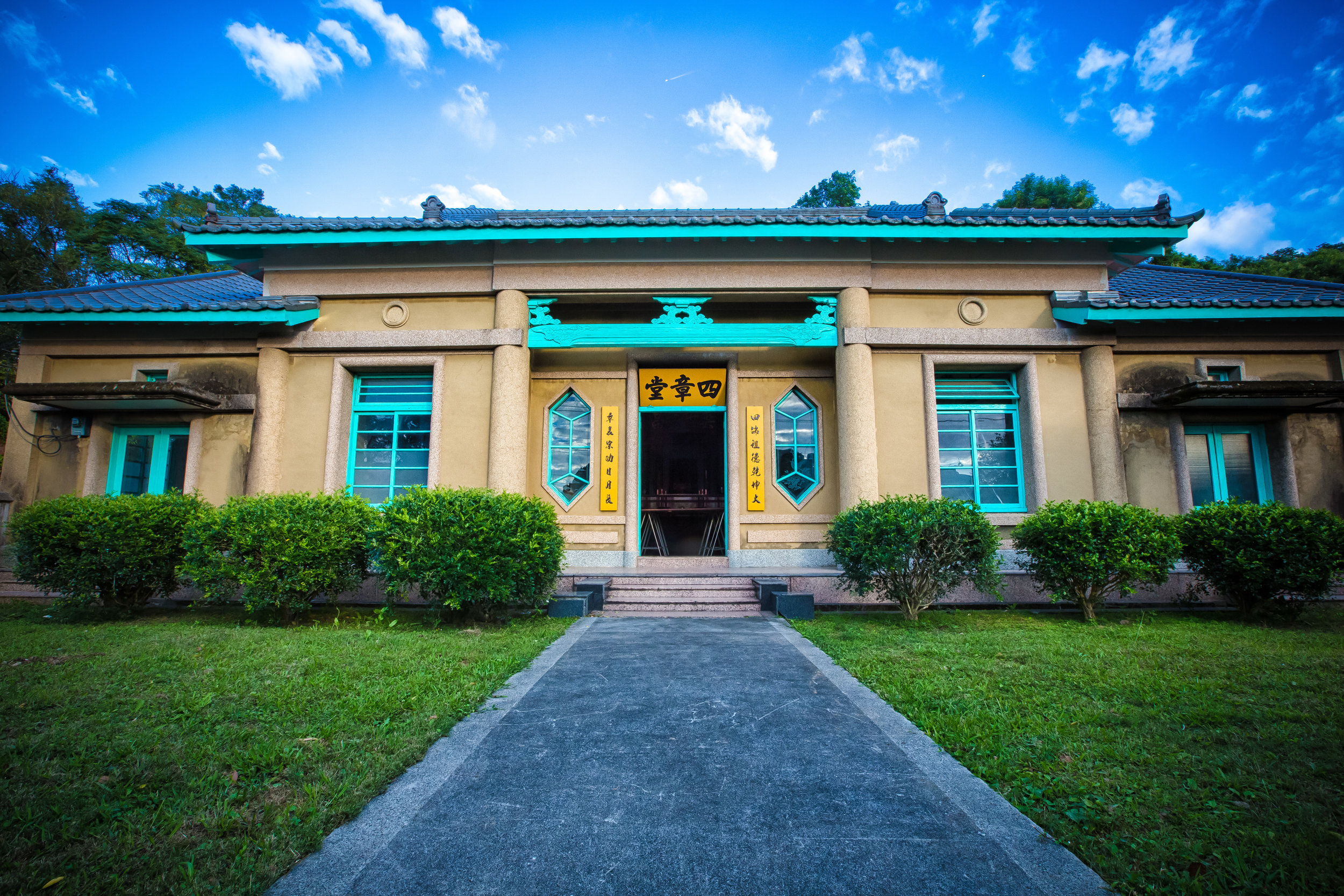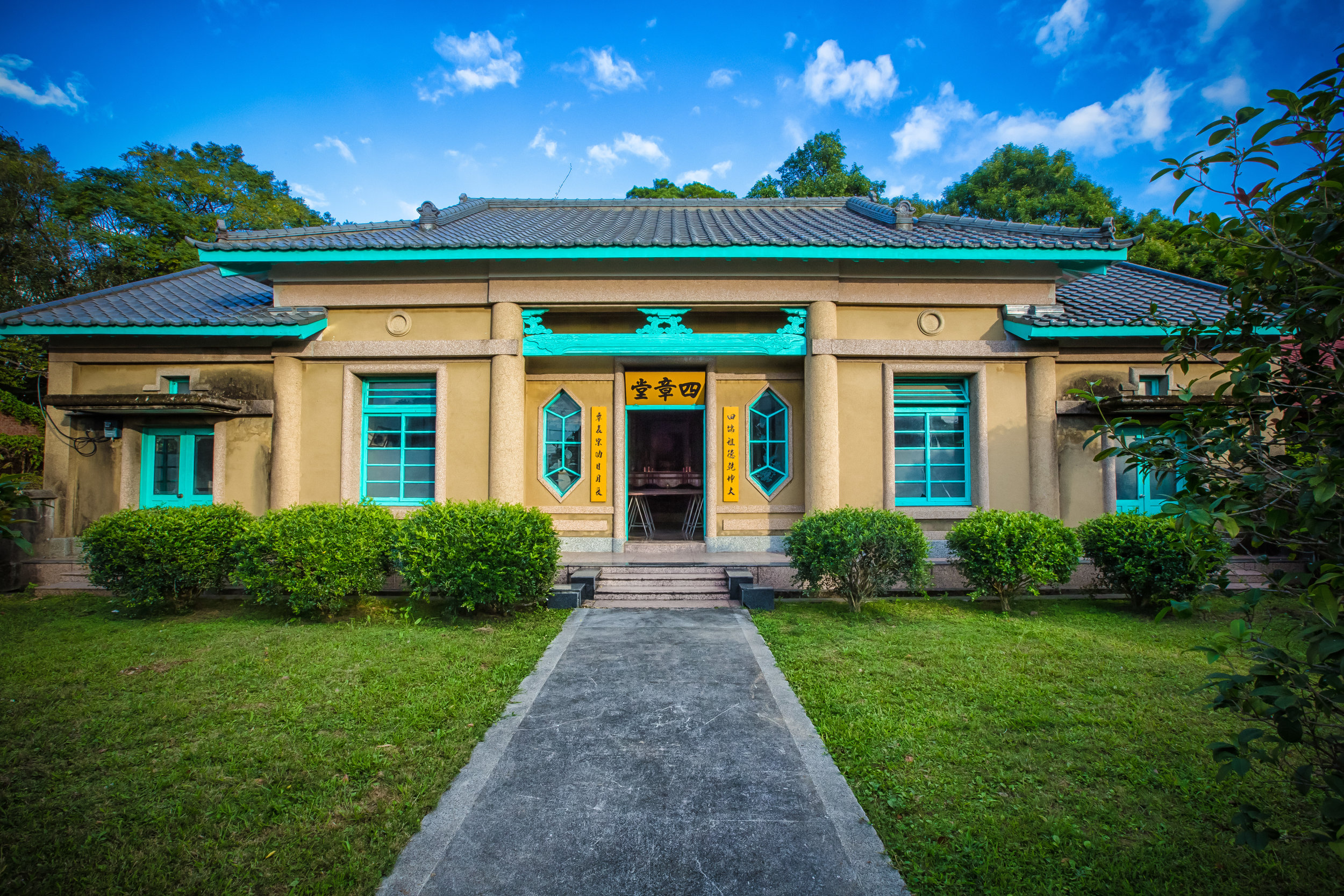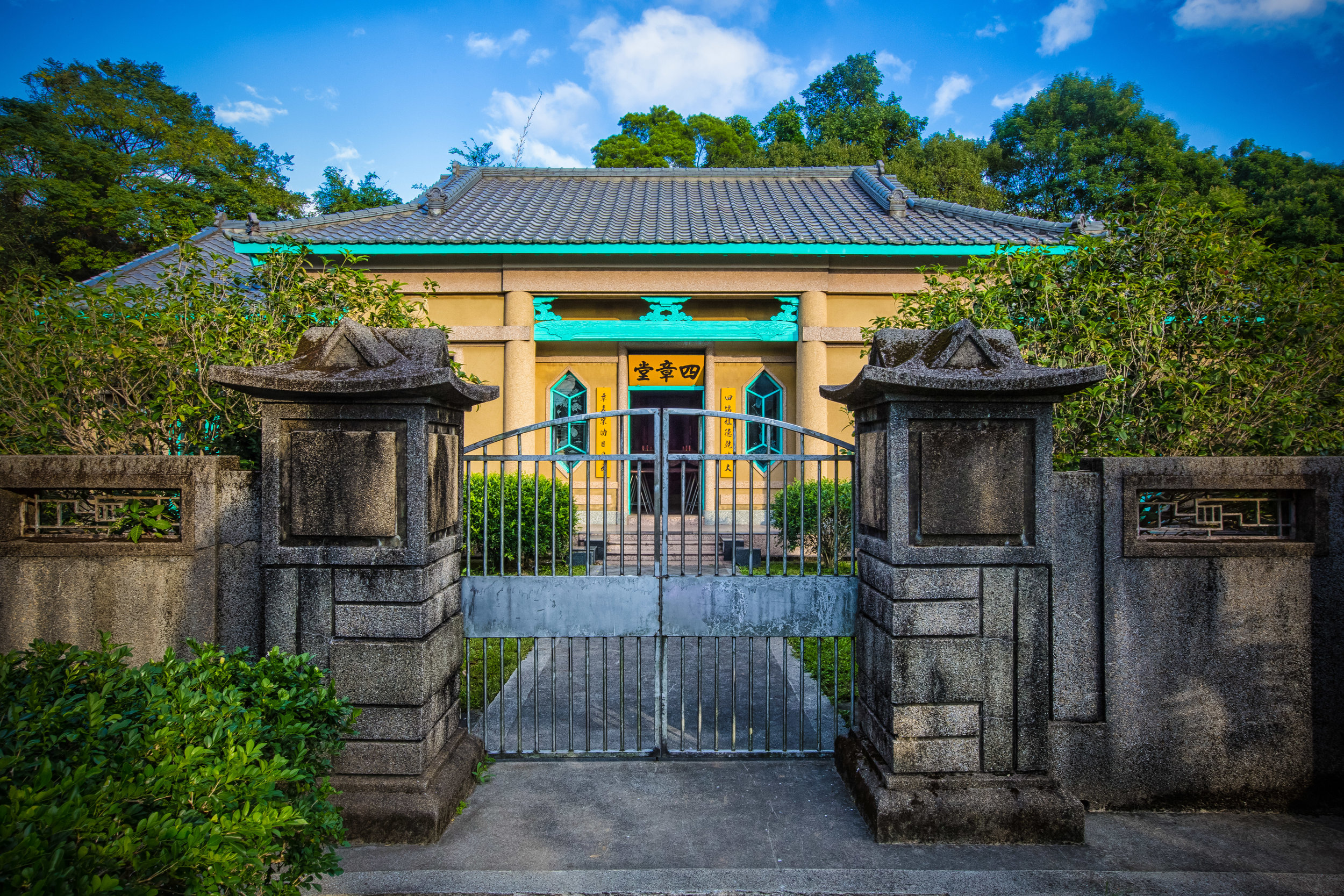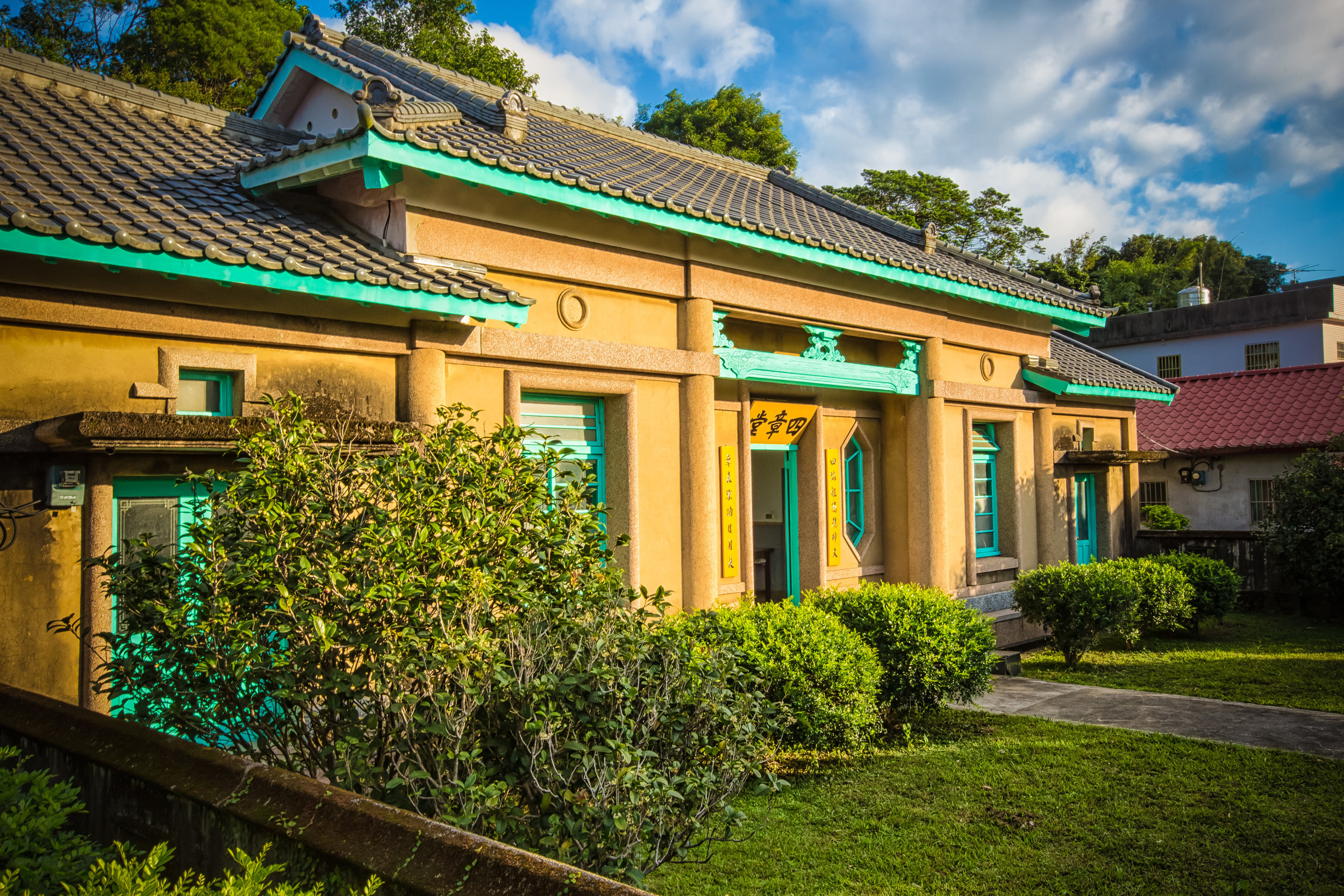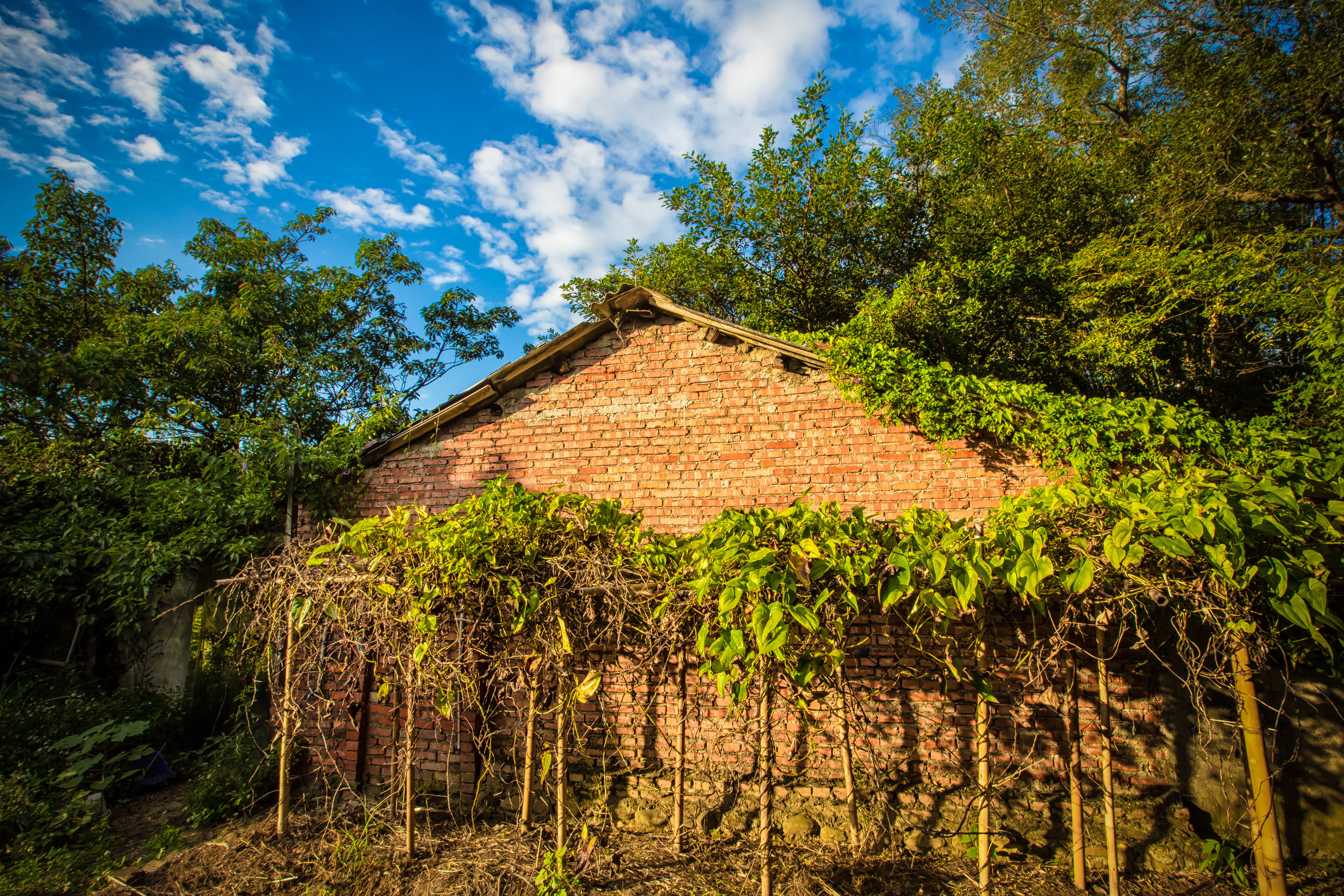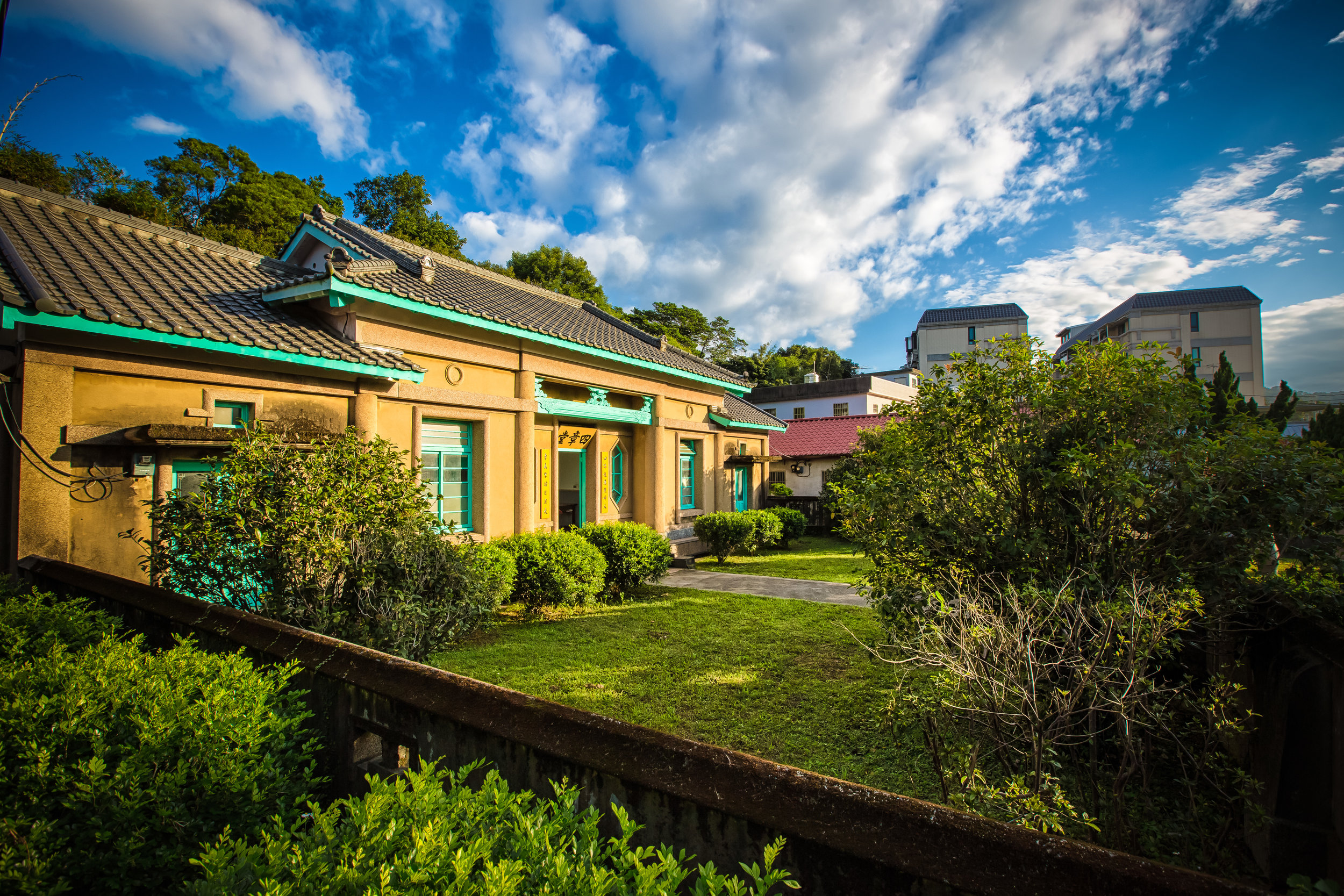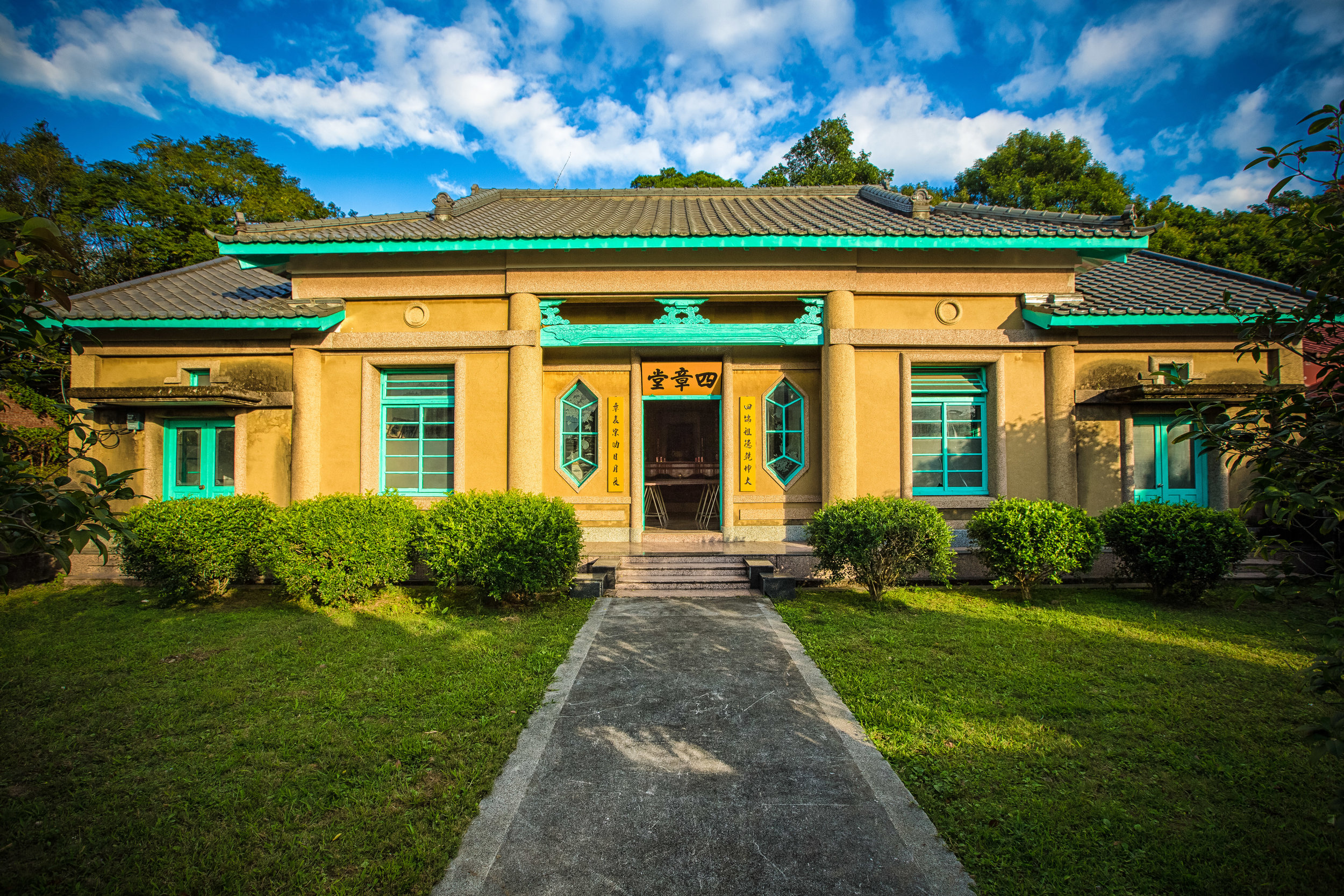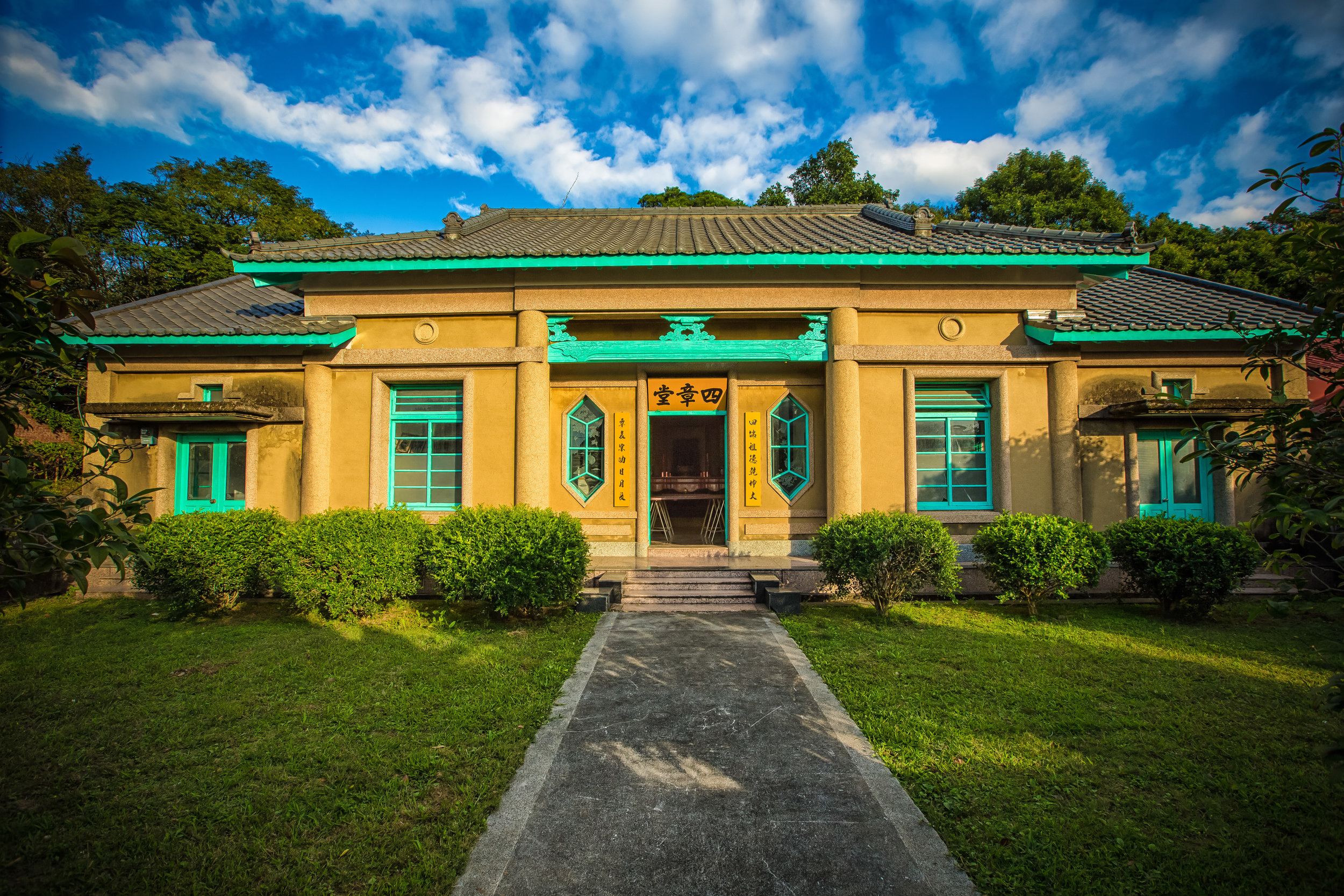Admittedly, when I first wrote about the Daxi Martial Arts Hall way back in 2017, I had neither the ability, knowledge or experience to talk about the building in any authoritative way. I was new to this whole blogging thing, and hadn’t been researching this subject for very long. The first iteration of this article was published shortly after the restoration of the building and would have been my second such visit to one of Taiwan’s remaining Martial Arts Halls.
And yes, there was likewise an equally terrible article about the Longtan Martial Arts Hall.
In the years since, I’ve returned to the Daxi Martial Arts Hall on numerous occasions, each time collecting more and more photos of the building, as well as visiting almost all of the other remaining Martial Arts Halls around the country. Given all that I’ve learned about them in the years since I first published this article, I figured it was time to give this one a complete update, and a fresh new look.
What you’ll find below is a completely re-written article that includes new photos mixed in with the older ones, and more importantly years of experience researching the Japanese Colonial Era, and learning about these historic buildings.
If you’ve read my recent update to my article about the Longtan Martial Arts Hall (linked above) what that essentially means is that this update is gong to contain considerably more information than I was able to provide in the original. However, in an attempt to keep it as brief as possible, I’ve gone ahead and removed many of the original elements of the article that didn’t focus specifically on the building, most of which provided an explanation of the Japanese-era, and the purpose of these Martial Arts Halls.
While it should be fairly obviously that this historic building was once a space for practicing Martial Arts, the original intent and the significance of these buildings requires a bit more reading to understand the role that they played in communities around Taiwan. To better explain all of that, I’ve put together a general introduction to Taiwan’s Martial Arts Halls, detailing their purpose, their history and where you’re still able to find them today.
If you haven’t already, I highly recommend reading that article before continuing.
Link: Martial Arts Halls of Taiwan (臺灣的武德殿)
If you’re up to date with all of that, let’s just get into it!
Consistently one of Taoyuan’s most popular tourist hot-spots, Daxi village, nestled in the mountains of South-Eastern Taoyuan City is home to an impressive (and ever-growing) number of tourist destinations. As impressive as that list is however, it should go without saying that the vast majority of attention is directed toward its beautiful “Old Street” (老街), which is arguably the best of all of the historic tourist streets around Taiwan.
Visiting Daxi on a weekend or a holiday will invariably be done so with a large crowd of hungry tourists who have ventured into town to enjoy the beauty of the historic street, its famed Hakka Cuisine, and its iconic “Dried Tofu” (豆乾).
In recent years however, Daxi has diversified the way it presents itself in an attempt to attract return visits from the people who fall in love with the quaint village. Granted, a visit to the Old Street is one of the things you absolutely have to do when you visit the area, but today you can visit a growing number of attractions in the area which include historic buildings, culture parks, floral expositions, nature walks, bike paths, etc.
Likewise, given that Daxi has always been the gateway to the mountains, you’ll also find that the Taoyuan Government has invested heavily in attracting tourists to visit areas like Jiaobanshan (角板山), Xiaowulai Waterfall (小烏來瀑布) and the Lalashan (拉拉山) and Dongyanshan (東眼山) National Forest Recreation Areas.
Within the downtown core of the village itself however you’ll find that the Taoyuan City Government has invested heavily in the restoration of buildings which date back to the Japanese Colonial Era, with the local Martial Arts Hall just being one on a long list of newly re-opened places to visit. These days not only can you experience the beauty of the historic Old Street while sampling local cuisine, but you can also learn a lot about the rich history of this significant little village thanks to the inclusion of all of these newly restored buildings.
Link: The Daxi that Japan left Behind (日本留下的大溪)
Certainly, there’s much more to Daxi than just the Old Street, and its historic Martial Arts Hall is just one of the amazing destinations that you’re able to enjoy while visiting the area!
Daxi Martial Arts Hall (大溪武德殿)
To understand why the Martial Arts Hall appears the way it does and why it’s located where it is, we first have to learn a little bit about Daxi, and its significance during the colonial era.
During the fifty years of Japan’s colonial rule from 1895-1945, The “Taoyuan City” (桃園市) that we know today was merely just a district of what was then known as Shinchiku Prefecture (新竹州 / しんちくしゅう).
Located in the area south of Taipei, or Taihoku (台北州廳), Shinchiku Prefecture encompassed much of what we refer to now as Taoyuan-Hsinchu-Miaoli (桃竹苗), with the capital of the prefecture located in Shinchiku City (新竹市 / しんちくし), known these days as Hsinchu.
As much of Taiwan had yet to really start development of anything larger than small settlements, the cities that we know today as Taoyuan (桃園), Zhongli (中壢), Zhudong (竹東) and Miaoli (苗栗) were classified by the Japanese administration as ‘districts’ (郡), and were essentially part of the hierarchical subdivisions of the larger prefecture.
While Taoyuan County’s recent amalgamation into the supercity known as “Taoyuan City” (桃園市) retains much of the original geographic boundaries that you would have found during the colonial era, the ‘city’ is currently divided up into thirteen “districts” (區), while the Japanese only used three, one of which was Taike (大溪郡 / たいけいぐん), or the area we know today as Daxi.
Prior to the arrival of the Japanese, Daxi made its riches thanks to its namesake, the “Big River”, officially known today as the Dahan River (大漢溪), which was utilized for transporting products and natural resources to the capital. The arrival of the railway however changed things drastically for the village as the modern method of transporting goods created economic uncertainty for the area.
Fortunately, as the gateway to the mountains, Daxi was able to retain its economic might as the arrival of the Japanese brought new opportunity, especially with regard to the cultivation of tea and the extraction of camphor from the forests.
By the early 1900s, the Japanese had taken control of the town and started an urban development project transforming Daxi into the village that we know today. The evolution of Daxi as we know it however took place over several decades, with many of the administrative buildings and the Old Street itself making their appearance during the first few years of the Showa Era (昭和), starting in 1926.
Having established the Taike District Police Bureau (大溪郡役所到大溪分局), and constructing a number of dormitories for the police and other civil servants between the 1900s and 1920s, Daxi became an ideal area for the construction of an official Martial Arts Hall. This was especially true when the “Taiwan Butokuden Branch of the Dai Nippon Butoku Kai” (大日本武德會臺灣支部) issued a directive to Taiwan’s Governor Generals Office to provide funding for establishing Martial Arts Halls around the island.
As mentioned in my article about the Martial Arts Halls of Taiwan, the directive required a hierarchy of Martial Arts Halls to be constructed around the island at the village and borough level (分會), town and city level (支所) and at the prefectural level (支部), all of which would report to the headquarters branch in Taipei.
In most cases, construction on the Martial Arts Halls started from the top down with those of the Prefectural Level (州廳) constructed first - Thus, the Shinchiku Martial Arts Hall (新竹武德殿) was constructed in 1915 (大正5年), with branches in Taoyuan and Zhongli appearing almost a decade before the one in Daxi.
Construction on the Daxi Martial Arts Hall started in 1930 (昭和5年), and was completed four years later in the latter stages of 1934 (昭和9年), but didn’t officially open until 1935 (昭和10年). When it opened, it had the very official (and difficult to translate) name: “Taike Branch of Shinchiku Prefectural Branch of the Taiwan Butokuden Branch of the Dai Nippon Butoku Kai” (大日本武德會台灣分部新竹支部大溪支所), which is a lot of branches if you ask me.
For the next decade, the Martial Arts Hall served as a center for the training of Judo (柔道) and Kendo (劍道), and by extension Sumo Wrestling (a Sumo arena was constructed a short distance from the hall) and apart from the main hall, several other buildings were constructed to assist in the facilitation of training the local police and military, all of which I’ll introduce below.
Constructed in the latter stages of the Colonial Era, the Martial Arts for better or worse ended up only serving its purpose as a training center until 1945, when the Japanese were forced to surrender control of Taiwan at the conclusion of the Second World War. Unfortunately for the people of Taiwan, the next several decades under the new colonial regime would prove to be eerily similar to the earlier authoritarian years of the Japanese-era.
When the Chinese Nationalists arrived in Taiwan, they were gifted with an already well-developed network of infrastructure left by the Japanese, and for the first few years the situation was somewhat stable. However, in 1949 when the they were forced to retreat to Taiwan (due to their deteriorating situation battling with the Communists in the Chinese Civil War), the island was suddenly faced with an influx of several million Chinese refugees, pushing the already established infrastructure to the brink.
The sudden influx of refugees meant that there was a massive housing shortage around the island and to solve that, many of Taiwan’s Martial Arts Halls, temples, shrines, assembly halls and civic buildings were converted into temporary housing for refugees. That being said, the Chinese Nationalists weren’t exactly big fans of the Japanese (after the Second World War), so when the housing situation stabilized, they started to tear down reminders of Japanese cultural influence. This meant that the vast majority of Shinto Shrines were destroyed, with only the larger shines converted into ‘Martyrs Halls’ (忠烈祠). Likewise many of the Martial Arts Halls suffered the same fate and only those that could be repurposed in some way were saved. In total there were once around two-hundred of them, today only about a dozen of them remain.
Fortunately for the Daxi Martial Arts Hall, President Chiang Kai-Shek (蔣中正) took an instant liking to the Daxi area and decided to take up residence within the former Daxi Assembly Hall (大溪公會堂), which was converted into a mansion for his family. In order to organize protection for the president and his family, the military took up residence nearby, and where better than the Martial Arts Hall, which was just a short walk away?
In 1950 (民國39年), the Martial Arts Hall was repurposed as a police outpost charged with the protection of the president and his family while they were staying at their vacation home. Even though the president died in 1975 (民國64年), the Martial Arts Hall continued to serve as a police outpost (charged with protecting the presidential villa) until it was eventually left abandoned around the turn of the century.
In 2004 (民國92年), the hall was recognized for its historic significance and was given protected status (歷史建築) by the local government which was tasked with coming up with plans to restore the building. The restoration project ultimately took until 2015 (民國104年), and was completed in stages as it included the addition of some ancillary buildings that were demolished after the Chinese Nationalists took control of Taiwan.
The Martial Arts Hall is currently open to the public as a key exhibition space for the newly formed Daxi Wood-Art Ecomuseum (桃園市立木藝生態博物館), which incorporates several other nearby Japanese-era buildings as well.
Daxi Martial Arts Hall Timeline
1895 (明治28年) - The Japanese Colonial Era begins here in Taiwan and the ‘Dai Nippon Butoku Kai was formed in Japan in order to instruct ordinary citizens in the various Japanese Martial Arts disciplines.
1900 (明治33年) - The first Martial Arts Halls start to appear in Taiwan in Taipei, Taichung and Tainan.
1920 (大正9年) - A governmental directive is made to construct Martial Arts Halls in each of Taiwan’s prefectures, towns, villages and boroughs.
1934 (昭和9年) - Construction on the hall in Daxi starts in August, with the ‘Munafuda-raising’ ceremony (上棟式) taking place a few months later in November.
1935 (昭和10年) - Construction on the Martial Arts Hall is completed in late March, and is officially opened on May 28th.
1945 (昭和20年) - The Second World War comes to a conclusion and Japan is forced to surrender control of Taiwan.
1949 (民國38年) - Chiang Kai-Shek and the government retreat to Taiwan and bring with them several million refugees displaced by the Chinese Civil War.
1950 (民國39年) - The Martial Arts Hall is converted into an outpost for the military police while the annex building was converted into housing for the police and the auxiliary building is demolished.
1975 (民國64年) - Chiang Kai-Shek passes away on April 5th and is entombed in a nearby Mausoleum in Cihu.
1978 (民國67年) - The former Daxi Assembly Hall (大溪公會堂), which was converted into a summer home for the president and his family is converted into a temporary memorial hall (蔣公行館) for the former President.
1999 (民國88年) - The military police (憲兵隊) relocate to a new building and ownership of the hall is handed over to the local township office.
2000 (民國90年) - The Daxi Township Office (大溪鎮公所) starts repairing the building, removing the blue paint and restoring it to its original condition.
2004 (民國93年) - The Taoyuan Government officially recognizes the building as a protected historic building.
2015 (民國104年) - Administrative control of the building is handed over to the Daxi Wood-Art Ecomuseum to ensure that the space is occupied and the building is open to the public.
2016 (民國105年) - Construction on the buildings that were originally part of the hall, but were demolished after the war, is completed and are opened up as exhibition spaces.
Now that we’ve got the history of the building out of the way, its time to talk a bit more in-depth about its architectural design and how this Martial Arts Hall differentiates itself from some of the others that remain in Taiwan today.
Architectural Design (大溪武德殿設計)
One of the areas where the first iteration of this article was severely lacking was in its description of the architectural design of the hall, which is considered to be rather ‘unique’ among all of the other remaining Martial Arts Halls in Taiwan. It also didn’t include much of a description of the connecting buildings that were once part of the hall and have since been completely rebuilt, making the hall complete once again. Below, I’ll introduce both the architectural design of the Martial Arts Hall, as well as the connected auxiliary building so that you have a better idea of what you’ll see when you visit.
A sign of the times, the Daxi Martial Arts Hall was constructed during the heyday of the Showa Era where modern construction techniques were being combined with traditional architecture, in a style that was a fusion of the east and the west. The Daxi Martial Arts Hall, like most of the Art-Deco Baroque-style buildings on the nearby Old Street, was thus constructed with reinforced concrete and a mixture of wooden components.
The 192㎡ (58坪) Martial Arts Hall features a reinforced concrete base that supports a wooden roof that in traditional fashion eclipses the size of the building making use of an architectural style known simply as the ‘Temple Style’ (寺殿式樣). In this specific style of design, we can see that the building incorporates architectural elements more commonly associated with Buddhist temples and Shinto Shrines in Japan, but rarely ever on regular buildings or residential housing.
One of the saving graces and main reasons why this building was never actually destroyed by the Chinese Nationalists is that even though it appears to be what most would consider a traditional “Japanese” style building, the architectural design of many of Japan’s ‘temple style’ buildings are inspired by the architectural style prevalent during China’s Tang Dynasty (唐朝) from 618-907. So even though the purpose of the building was for the promotion of Japanese martial arts during the colonial era, the building itself could also easily pass off as a Chinese-inspired structure.
That being said, traditional Japanese design elements are prevalent throughout the building, starting with its ‘irimoya-zukuri’ (入母屋造 / いりもやづくり) hip-and-gable roof design, the ‘karahafu porch’ (唐破風), and the various decorations found within the building and on the exterior. Irimoya-zukuri style design is a common one within traditional Japanese-style buildings, especially for those used as places of worship, due to its highly decorative and intricate style of construction. In this style of design, the ‘moya’ (母屋), otherwise known as the ‘base’ of the building, is constructed in a way that allows the smaller base to support the weight of the hip-and-gable roof above.
In this case, the Daxi Martial Arts Hall was constructed well into the Showa Era, and even though most of its contemporaries around Taiwan were constructed primarily with wood, this one gets to cheat a bit as it was constructed using reinforced concrete. Given that the base of the building was constructed using modern materials, the wooden hip-and-gable roof above is easily able to eclipse the rest of the building in size.
Link: Irimoya-zukuri (JAANUS) | East Asian Hip-and-Gable Roof (Wiki)
When we say a building has a ‘hip-and-gable’ roof, what we mean is that the roof can be thought of as a fusion of two styles of roof design, with a ‘two-sided’ upper section (hip), known as the ‘kirizuma-zukuri’ (切妻造) and a ‘four-sided’ lower section (gable), known as the ‘yosemune-zukuri’ (寄棟造). The interesting thing about this fusion roof design is that it plays a bit of an optical illusion on whoever is looking at it as the upper-section appears smaller than the lower section, but in actuality covers the entirety of the ‘moya.’ This allows the lower area of the roof to extend well beyond the perimeter of the building while also distributing the weight evenly to ensure structural integrity.
Generally speaking, in typical ‘irimoya’ design used for places of worship in Japan, the lower gable section often extends much further beyond the perimeter of the base below in an attempt to display more grandeur, but that’s not the case here with the Daxi Martial Arts Hall as its design is a little more subdued in comparison and the gables only extend a short distance. That being said, there is a considerable amount of symmetry in the design of the roof with the left and right sides as well as the sloping section on the front and back of the building. It should also be noted that given this halls position within the hierarchy of halls within Shinchiku Prefecture, the only reason that the roof appears as beautiful as it does is thanks to the period in which it was constructed as other halls of its rank featured considerably more simplistic roof designs.
Even though the Martial Arts Hall has been restored on several occasions, one of the things that has remained the same since the 1930s is the exterior of the roof. While the interior section has been reinforced with a modern support network, the outside tends to look a bit dated (especially if you’re looking at it through a telephoto lens), which I suppose shouldn’t be a huge surprise since the building is ninety years old. It does however go to show the mastery of Japanese-era construction in that the building has been able to maintain the same roof for so long, especially when you consider it has withstood decades of typhoons and earthquakes.
Link: 台灣日式建築的屋瓦 (空間母語文化藝術基金會)
In terms of the traditional elements that you’d find on a Japanese-style roof of this kind, the design here is considerably minimalist - There are a few things however that you’ll want to take note of:
Tsuma (妻/つま) - the triangular-shaped parts of the gable on the roof under the ridge.
Shibi (鴟尾 /しび) - ornamental ridge-end tiles that are used to symbolize protection.
Gegyo (懸魚 / げぎょ) - decorative wooden boards on the ends of the ‘tsuma’ in the shape of a hanging fish. Used as a charm against fire, similar to porcelain dragons on Taiwanese temples.
Of particular note for the roof, the “shibi” and the “gegyo” (#2 and #3 in the diagram above) are two of it’s most significant decorative design elements as this Martial Arts Hall is currently one of the only remaining halls in Taiwan which features these ornamental ridge-end tiles. Translated literally as “owls tails” (鴟尾), the curved end-tiles are located on both the eastern and western-ends of the roof. Likewise, the ‘gegyo’, known as ‘hanging fish’ are located just below them at the apex of the triangular ‘tsuma’, and in both cases they are used to symbolize a type of ‘spiritual protection’ from fire or disaster. While you’ll find the ‘hanging fish’ design on many of Taiwan’s Japanese-era buildings, the combination of both of these design elements is certainly a rarity these days.
Moving on, one of the most architecturally significant aspects of the building, and its roof is the ‘covered-front porch’ located directly in the front center of the building, known as a karahafu porch (唐破風). This style of design draws its inspiration from the architecture of the Tang Dynasty and is quite popular in Japan. Karahafu porches have been utilized within Japanese architecture since the Heian Period (平安時代) from 794-1185, and are typically reserved for buildings of significance.
Extending from the front of the building, and making use of pillars made of reinforced concrete, the porch features a roof that is ‘separate’ from the main roof, but beautifully adds to the flowing shape of the building with its chidori-hafu (千鳥破風/ちどりはふ) design.
As mentioned above, the Martial Arts Hall has a space of about 192 square meters, with doors located at the front as well as on the left and right side of the building. As is the case with all of Taiwan’s Japanese-era Martial Arts Halls, the interior consists simply of a large open space with beautiful hardwood floors. The floor space however would have originally been split into different sections, with the left side reserved for Judo and the right for Kendo. Located in the centre-rear of the room (directly facing the front door) you would have found a small space reserved for a shrine (神龕), and likely some decorative additions that would have been related to Martial Arts or the word “budo” (武道), in addition to any trophies or awards that were won by members of the dojo.
When you’re inside the hall, one of the best things you can do is find a spot where you can look up at the ceiling, which is completely open and allows you to view the intricate network of beams and trusses that allows the massive roof to stay in place. The most recent restoration of the building added some modern lighting up there that allows you to get an even better look at the mastery of architectural design.
One of the things that is missing from the original roof however is the ‘munafuda’ (棟札 / むなふだ), which is traditionally placed in the center of the ceiling area. Munafuda are essentially plaque-like markers that are added to Japanese buildings (of note) during construction and display some important information about origin such as when it was built, who built it, who paid for it, etc. Even though the original marker is missing, you’ll find a replica of the original on display in one of the corners of the building, which was carefully reproduced a few years ago.
The information on the marker was as follows: 『昭和九年十一月八日癸未吉祥舉行上』or “Munafuda raising ceremony took place on November 8th, Showa Year 9 (1934).”
Today much of the interior space of the building is occupied by the ‘Wood-Art Ecomuseum’ as an exhibition space, but you’ll still find some important historical information about the Martial Arts Halls, as well as some of the long-lost branches around Taoyuan as part of a permanent exhibition along the eastern side of the building.
Speaking of replicas, one of the newest additions to the Martial Arts Hall is a complete reproduction of its original Annex Hall and Corridor (渡廊). While the majority of Martial Arts Hall during the Japanese era would have included an “Annex Hall” nearby, most of them have since been demolished. Of the more than a dozen remaining Martial Arts Halls in Taiwan today, only Qishan, Changhua, Taichung and Daxi continue to feature these buildings, and they are all sadly recent reproductions of the original.
The Annex Halls, which were either near the Martial Arts Hall or connected directly to the side were buildings where instructors could relax, perform administrative duties, and in some cases even included dormitories for the administrators and instructors. In the case of the Daxi Hall, the annex building was constructed a short distance from the western-side of the building, and was connected directly by an elevated corridor.
Unfortunately the only problem with the Annex Building today is that it is difficult to tell how faithful of a reproduction it is given the difficulty of finding any quality Japanese-era photos of the building.
That being said, the building that is connected to the Martial Arts Hall today was beautifully constructed and its addition makes a visit to the hall a much more special one. As you exit the Martial Arts Hall to the elevated corridor, you’ll find another hardwood floor and a narrow passageway that is lined with glass windows on both sides. If you ask me, it is one of the coolest places in all of Taoyuan to take some photos, and I think that props should be given to the local government for taking the initiative to include it as part of the restoration project.
Once you’ve crossed over into the Annex Hall, you’re met with what would have been an open meeting space with large sliding glass windows on both sides of the room. The room is currently used as a revolving exhibition space, but if you’re lucky to visit when they’re between exhibitions, the empty room is really quite stunning. Directly on the other side of that room appears to be what would have been a living space and an administrative space with tatami mat floors.
One of these spaces is currently used to allow families to sit with their kids and create some arts and crafts, while the other features some history about the Martial Arts Hall - and others around Taiwan. You’ll find a couple of binders full of historic photos of those that have been demolished, and those that fortunately still remain with us today. I highly recommend sitting down and checking them out if you have the chance.
Essentially what you’ll see in the Annex Hall is similar to many of the other restored dormitories in the area, but its existence makes the Martial Arts Hall much more complete. I would add though that its architectural design differs from those dorms, and that its use of space is much more grand, giving visitors a sense of what it would have been like to visit the hall almost a century ago.
Some people might even end up enjoying their visit to the Annex Hall more than the Martial Arts Hall!
I’m hoping you have a complete experience when you visit though!
Getting There
Address: #35 Puji Road, Daxi District. (桃園市大溪區普濟路35號)
GPS: 24.883480, 121.285390
The Daxi Martial Arts Hall is located close to Daxi Old Street, and is one of the places that you absolutely have to visit when you’re in the area; A short walk from both the Old Street and the local Bus Station, the Martial Arts Hall (as mentioned above) is located in an area of the town that was once reserved for civil servants during the colonial era, so in addition to the hall, you’ll also find a number of other Japanese buildings that have been converted into interesting tourist destinations.
Getting to the Martial Arts Hall is relatively easy, but if you’re walking around town (like most people do) you’ll discover that a walk along the Old Street will eventually bring you to a riverside park where you can continue walking until you come across the building. That being said, that all depends on where your tour of the historic village starts as there are a couple of parking lots near the Martial Arts Hall that might allow you to start your day with this beautiful building.
Car / Scooter
If you have access to your own means of transportation, getting to Daxi shouldn’t be too difficult - Simply input the address or the coordinates provided above into your GPS and you’ll find yourself there in no time. While driving a scooter shouldn’t pose much of a problem for most visitors, even during the busiest times, driving a car is a completely different story. The problem with driving a car is that there are often large traffic jams, and long waits for parking spaces on weekends and during national holidays, when the area is at its busiest.
Given how narrow the streets are within the downtown core of Daxi, parking near the Old Street can be somewhat difficult, and it is very rare that you’d be able to find roadside parking. This means that the further you park away from the main tourist area, the easier (and cheaper) it will be.
In order to help control the flow of traffic, there are a number of parking lots in the area that you’ll want to consider. The first two are probably your best options as they are the largest and cheapest of the parking lots, but they will require a bit of a walk to the tourist area.
Qiaotou Parking Lot 橋頭停車場 ($50NT)
Yuemei Parking Lot 月眉停車場 ($50NT)
Ting’er Parking Lot 停二停車場 ($30/hour weekdays - $40/hour weekends)
Old Street Park Parking Lot 老街公園停車場 ($30/hour weekdays - $50/hour weekends)
Old Street Parking Lot 老街停車場 ($30/hour weekdays - $50/hour weekends)
High Speed Rail / Train
As I’ve already mentioned above, the construction of the railway forced the people of Daxi to come up with new ideas for making money. With that in mind, it should be fairly obvious that there aren’t any railway stations in the vicinity of the village. You can however take a train or the High Speed Rail and conveniently transfer to one of the buses or shuttles that transport tourists to the area.
High Speed Rail (臺灣高鐵)
Take the Taiwan High Speed Railway to Taoyuan HSR Station (桃園高鐵站), and from there transfer to Taiwan Trip Shuttle Bus #501
Taiwan Railway (臺灣鐵路)
From Taoyuan Railway Station (桃園火車站)
From the Taoyuan Train Station you’ll want to transfer to Taoyuan Bus (桃園客運) #5096 to Daxi.
From Zhongli Railway Station (中壢火車站)
From the Zhongli Train Station you’ll want to transfer to Taoyuan Bus (桃園客運) #5098 to Daxi.
Bus
There are a number of options for taking the bus to Daxi, either directly from the two railway stations in Taoyuan, or from New Taipei City.
Each of the buses that you can take is listed below with links to where you can find the bus, their route map and their schedule:
Taoyuan Bus #5096 (Taoyuan - Daxi)
Taoyuan Bus #5098 (Zhongli- Daxi)
Taoyuan Bus 9103 (Banqiao - Daxi)
Taoyuan Bus #710 (Yongning MRT Station - Daxi)
Taiwan Trip Bus #501 (Taoyuan HSR Station - Daxi) 台灣好行大溪快線
Links: Taoyuan Bus (桃園客運) | Taiwan Trip Shuttle (台灣好行)
As one of the most important parts of the Wood-Art Ecomuseum, the Daxi Martial Arts Hall is open to the public and features revolving exhibitions. Entry is free of charge, but you’ll have to remove your shoes and put on a pair of the slippers provided before entering the building.
Hours: Tuesday - Sunday (09:30 - 17:00)
References
大溪木藝生態博物館武德殿 (Taoyuan Travel)
大溪武德殿 (Wiki)
大溪武德殿修護工作吿書 (桃園文化局)
第二章 大溪武德殿的歷史沿革 (桃園文化局)
破風 (Wiki)
失而复得的大唐建筑 - 台灣武德殿 (Willie Chen)
桃園大溪.武德殿 日據時代的武道館 (Albert Hsieh)
桃園市大溪 - 武德殿.四連棟.藝師館 (王叮噹)
記憶,再生 Memory, Regeneration (桃園市文化局)
台灣武德殿發展之研究 (黃馨慧)


























